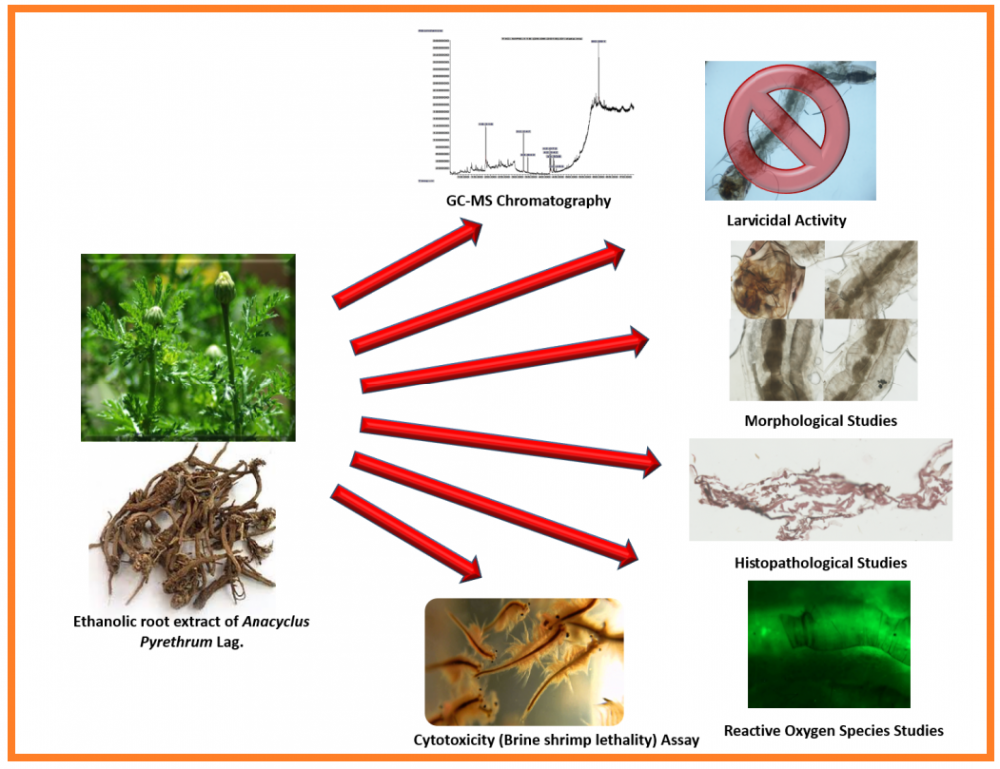JOURNAL 1979
Records of Natural Products
Year: 2021 Issue: 6 November-December (Special Issue Dedicated to the Memory of Professor Ayhan Ulubelen)
p.476 - 486
Viewed 2489 times.
GRAPHICAL ABSTRACT

ABSTRACT
Anacyclus pyrethrum Lag. is a medicinal plant. In this study we evaluated the susceptibility of larvae of Aedes aegypti Linn. against potential larvicidal effects of root extract of A. pyrethrum. Bioassays were performed using World Health Organization methodologies. GC-MS analysis was employed to determine the contents of the extract. The underlying mechanisms of larvicidal activity were analyzed by using morphological, histological, and Reactive Oxygen species (ROS) studies. The GC-MS of A. pyrethrum root extract showed nine compounds. During initial screening, the root extract killed 90% of 3rd instar larvae of A. aegypti at 0.2 mg/mL concentration as compared to standard permethrin. Different larval stages exhibited 100% larvicidal activity, especially more naive 1st and 2nd instar larvae. The dose dependent larvicidal activity against 3rd instar larvae, showed reduced effect with decreased concentration. Disruption in gut line of 3rd instar larvae is proposed to be mediated from the ROS production, evident in fluorescent oxidant sensitive assay. The extract exhibited non-cytotoxic profile in brine shrimp lethality assay with IC50 of 126.93 ± 0.3 µg/mL as compared to standard etoposide i.e., IC50 = 7.46 ± 0.05 μg/mL. The study inferred that the root extract of A. pyrethrum can serve as promising biopesticide for the control of A. aegypti, which is a vector of many viral diseases.
KEYWORDS- Anacyclus pyrethrum Lag.
- Aedes aegypti Linn.
- larvicidal Activity
- ovicidal activity
- dengue hemorrhagic fever
- biopesticides